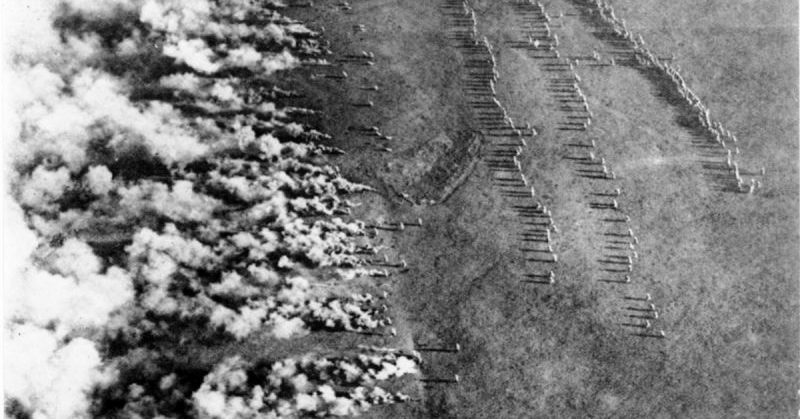Few weapons create as deep a sense of horror as poison gas. Its arrival on the battlefields of WWI brought horrendous injuries and appalling deaths that were unprecedented in their unfamiliarity. The counter-measures worn by troops added to the psychological disturbance, as alien-looking bug-eyed masks replaced human faces.
It was the war in which poison gas played its most substantial and terrible part on the battlefields.
The Introduction of Gas
The idea of using poison gas as a weapon was not new, but until WWI it had been considered uncivilized. The stalemate of the trenches on the Western Front, together with the indecisive but devastating battles in the east, resulted in commanders using gas. Any way to break the stalemate was worth considering.
The Germans were not the only nation working on gas weapons, but they were the first to deploy them. In October 1914, they experimented with an irritant gas at Neuve-Chapelle, but the concentration was so little their enemy did not notice. In January 1915, they tried to deploy a larger quantity of tear gas against the Russians near Bolimov, but freezing weather stopped the gas from dispersing.
The first effective gas attack was launched on April 22, 1915. Once again, the target was Allied troops around Neuve-Chapelle on the Western Front. The Germans released a cloud of chlorine gas which was carried by the wind into the Allied trenches. French Algerian troops ran from their trenches as the gas made them choke and cough. The Canadian soldiers next in line got a taste of the gas but not enough to break them. They held their ground and drove off the German attack that followed.
The Germans had not taken the trenches they were after but they had shown that gas could be potent.
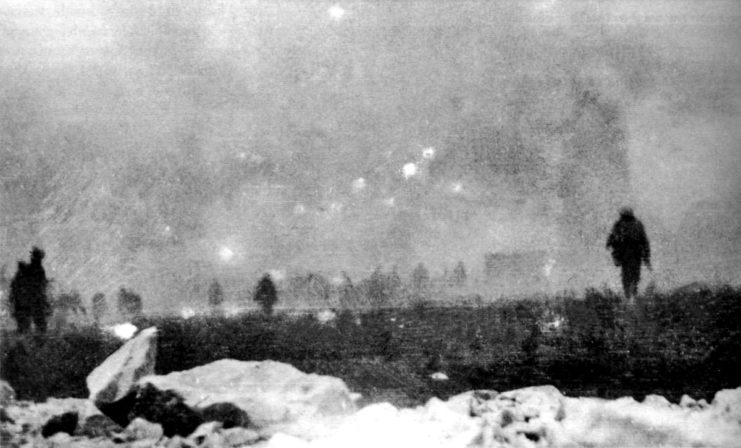
Types of Gas
Among the proponents of gas weapons, opinion was divided on what made the best gas. Some believed that a lethal gas was more successful, killing as many enemies as possible. Others believed it was better for the gas to cause damage but not kill so that it would leave disabled soldiers as a drain on enemy resources.
The men behind the weapons were engaged in the terrible arithmetic that sees a human life as nothing more than a resource for a war machine.
Chlorine was one of the most widely used gases. Once released, it formed a green-gray cloud. Within seconds of breathing it in, a victim’s respiratory system was subjected to terrible damage. If lucky, a soldier would choke, cough, and be left with scarred breathing channels. If not, his lungs filled with fluid, and he drowned.
Mustard gas was another popular choice to use. It caused blisters, blindness and burning on the flesh it touched. It could lead to internal bleeding, vomiting, and death. The men it did not kill survived with severe disabilities.
Phosgene was a colorless gas with a fresh smell of newly mown hay. It choked soldiers more quickly than chlorine.
Lewisite, an American creation and a by-product of research on synthetic rubber, caused worse blistering than mustard gas.
Non-lethal weapons were sometimes used, such as the xylyl bromide tear gas the Germans tried to use at Bolimov.
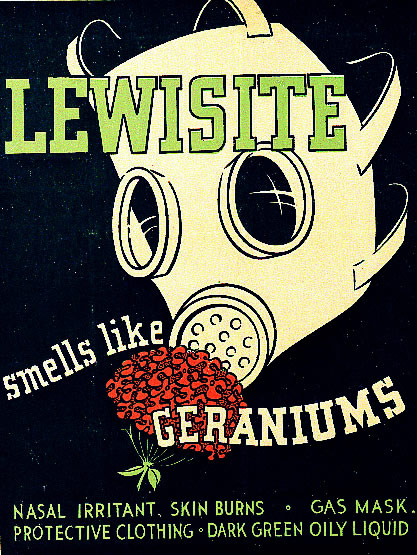
Delivery
There were two ways to deploy poison gas.
The first approach was to release the gas from canisters. It formed clouds in the air which were carried by the wind across no man’s land and into the enemy trenches. It had the disadvantage of a short range and dependence on the weather. A change in the wind could stop the gas from moving or worse send it back to where it came from.
By 1916, canisters were being replaced by artillery shells. They were filled with a liquid form of the gas. On impact, a small explosive charge burst the shell open and evaporated the liquid, creating a poison cloud. Shell dispersal had a better range and accuracy, although windy weather still interfered with the result.
Some artillery shells contained both gas and high explosives for a mixed damage effect. Gas shells were often used alongside other shells, to subject soldiers to as much devastation as possible.
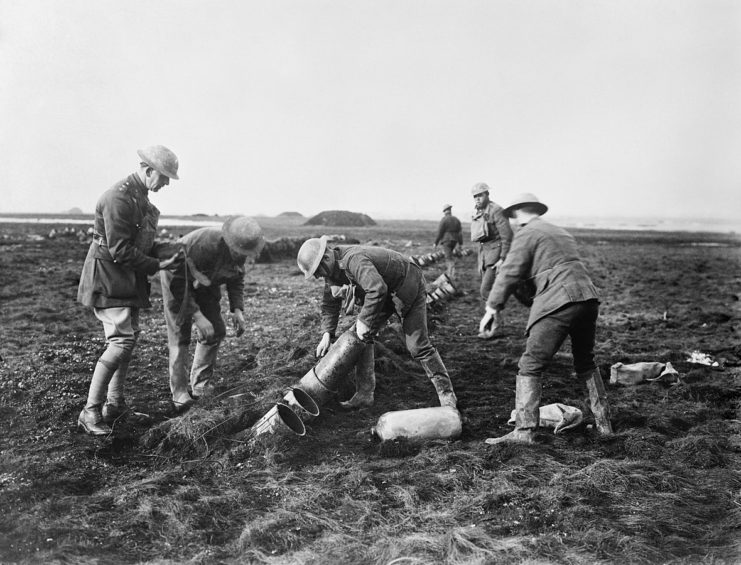
Casualties and Counter-Measures
The result of gas attacks was often horrifying. Survivors were left blinded or with peeling skin. Lungs were scarred for life.
Masks were quickly developed to protect troops from gas attacks. Masks were also made for working animals, such as the horses used to drag supplies and artillery around the front.
The first gas masks were improvised. During the second day of gas attacks at Neuve-Chapelle in April 1915, the Canadians tied wet cloths to their faces. The chlorine gas was water-soluble and so could be removed from the air by water.
The earliest purpose-built masks were thick cotton pads covering the nose and mouth, soaked with bicarbonate of soda. They were worn with separate goggles. Face-covering hoods that combined a mask and respirator followed. They contained filters which used charcoal or chemical compounds to neutralize the harmful chemicals.
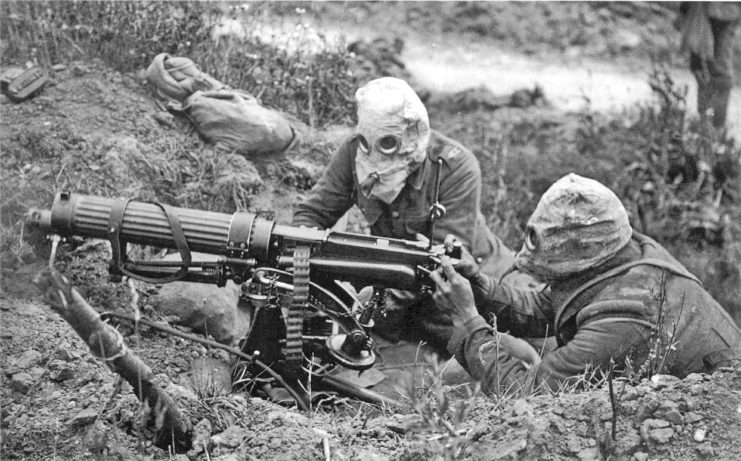
The Impact of Gas
The effects of poison gas in the war were more psychological than material. It terrified the soldiers facing it often causing them to flee, but its success depended on the weather and what protective equipment the men it was approaching had. Gas generated only 1.1% of deaths on the Western Front. However, wearing gas masks limited the troops’ ability to fight, leaving them vulnerable to other forms of attack.
The horrific effect of gas led most countries to desist in its use following the war. It was once again labeled as uncivilized and banned. During its brief heyday, it left thousands of soldiers with terrible injuries and carried thousands more to an agonizing death.
Sources:
William Weir (2006), 50 Weapons that Changed Warfare
Ian Westwell (2008), World War I
